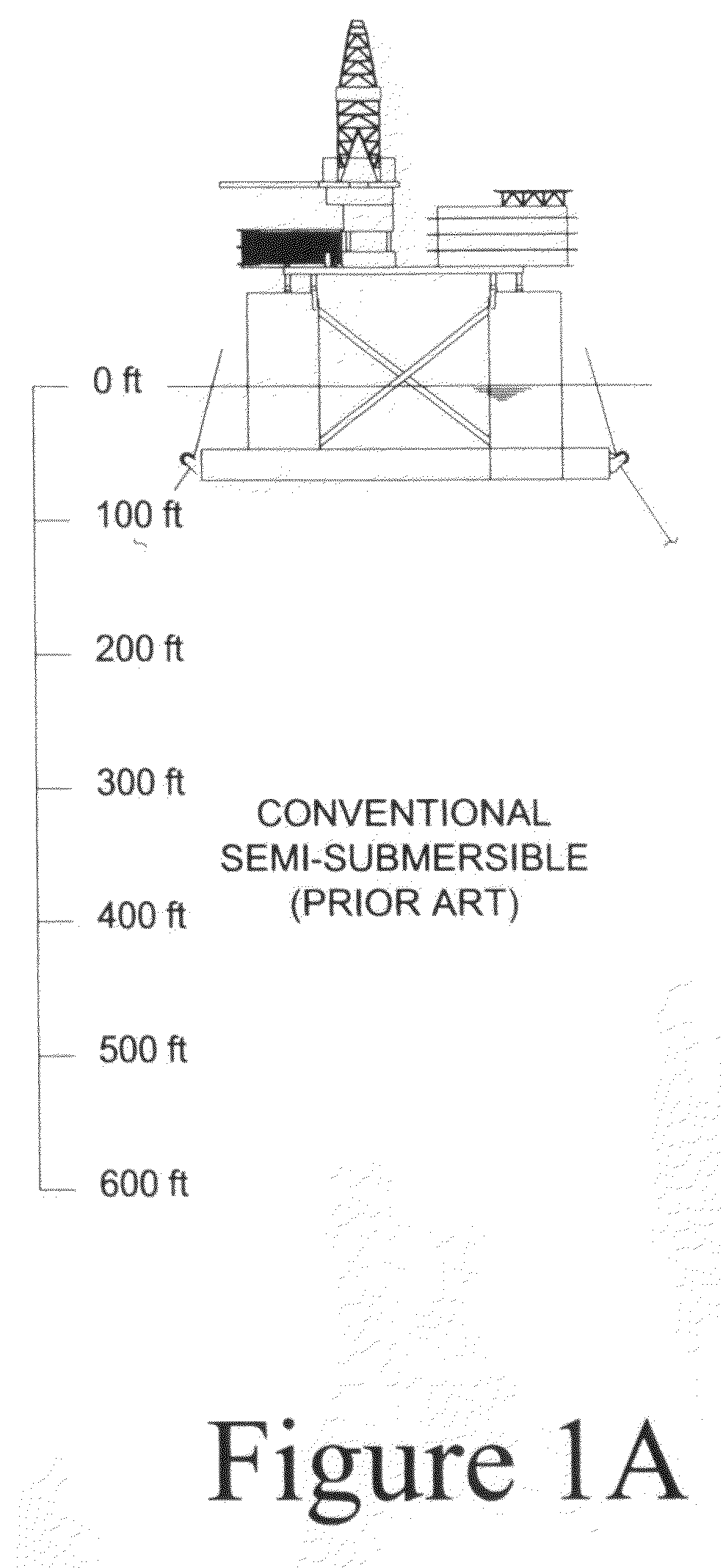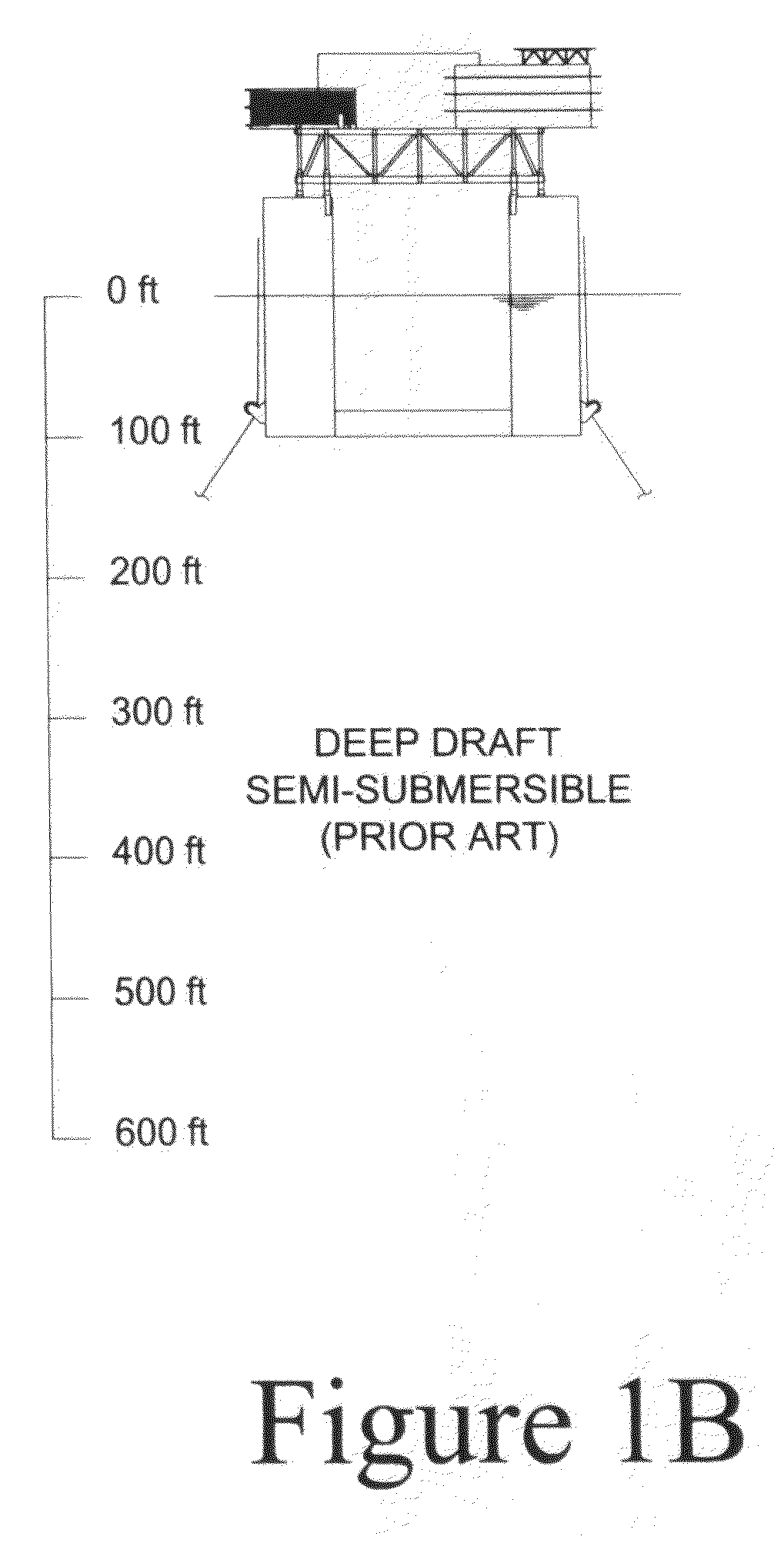Dual Column Semisubmersible for Offshore Application
a technology of semi-submersible and offshore, which is applied in the direction of special-purpose vessels, vessel construction, transportation and packaging, etc., can solve the problems of limiting applicability, no dds have been installed are not suitable for dry-steel production applications, etc., to improve the opportunity, improve the effect of motion, and improve the efficiency of the deck structur
- Summary
- Abstract
- Description
- Claims
- Application Information
AI Technical Summary
Benefits of technology
Problems solved by technology
Method used
Image
Examples
Embodiment Construction
[0044]Referring to FIGS. 2 through 5, one preferred embodiment 10 of the present invention consists of the following components:
[0045]four inner columns 11,
[0046]four main pontoons 12,
[0047]four outer columns 13,
[0048]four connecting pontoons 14, and
[0049]column connection structure 15 connecting the inner and outer columns.
[0050]The inner columns 11 provide support to the deck structure 17 in addition to providing buoyancy and stability for the platform. The main pontoons 12 connect the vertical columns at their lower ends and also provide buoyancy for the platform. The outer columns 13 provide additional stability and buoyancy for the platform and help with hydrodynamic force cancellation due to pairing with the inner column. The outer columns can be used to support the deck structure or the deck may be clear of the upper end of the outer columns such that there is no connection. Having the upper portion of the outer column clear of any obstruction from or connection to the deck h...
PUM
 Login to View More
Login to View More Abstract
Description
Claims
Application Information
 Login to View More
Login to View More - R&D
- Intellectual Property
- Life Sciences
- Materials
- Tech Scout
- Unparalleled Data Quality
- Higher Quality Content
- 60% Fewer Hallucinations
Browse by: Latest US Patents, China's latest patents, Technical Efficacy Thesaurus, Application Domain, Technology Topic, Popular Technical Reports.
© 2025 PatSnap. All rights reserved.Legal|Privacy policy|Modern Slavery Act Transparency Statement|Sitemap|About US| Contact US: help@patsnap.com



